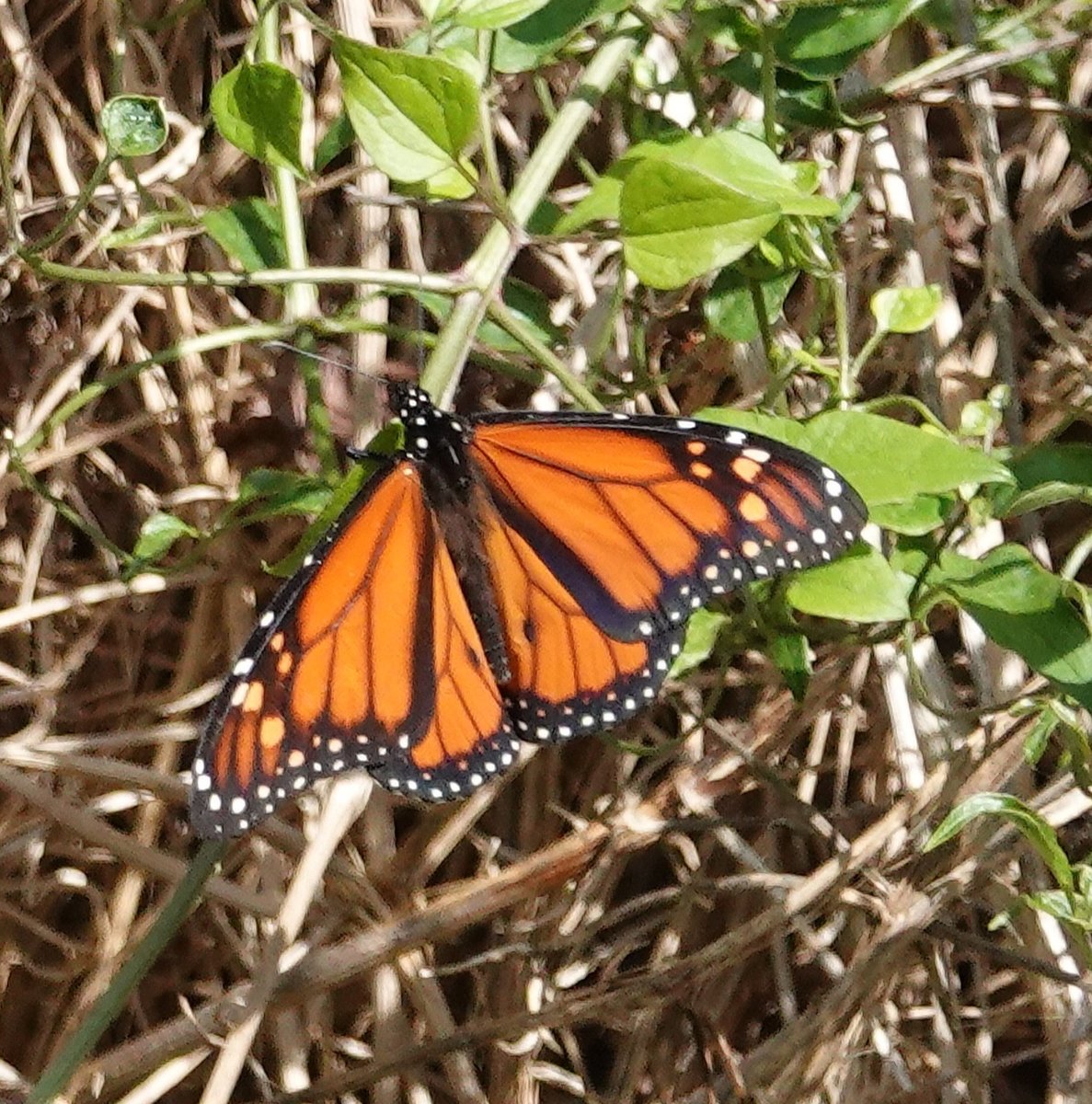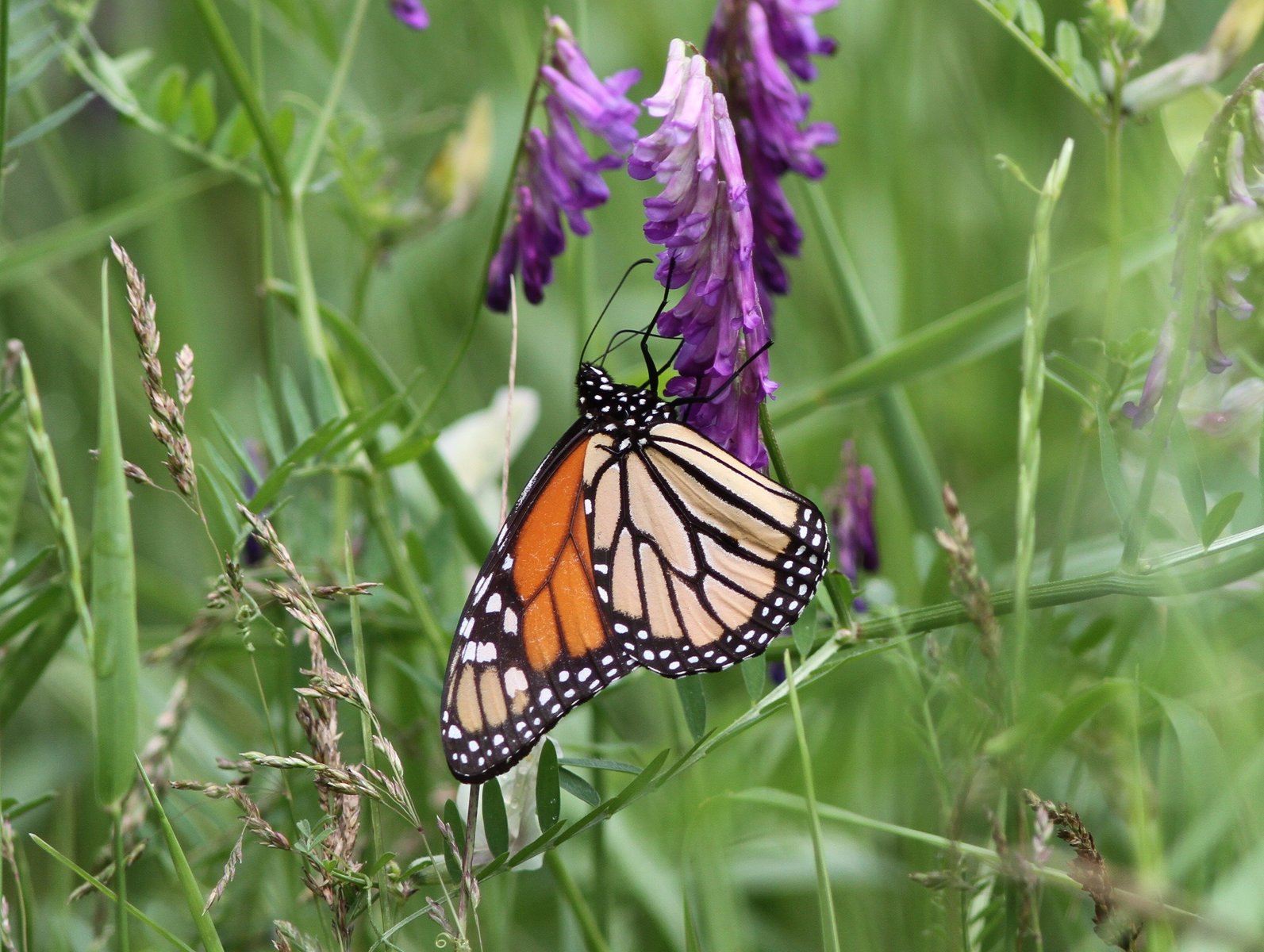
[This post has been updated as of 5/29/20. See Comments from Emile DeVito and Jack Miller below — and a link to Journey North with further information.]
Kathy Horn’s photograph above sparked a search for comments or other photos on the log of male monarchs arriving in April and May, when the species first reaches our area each spring.
Female monarchs are fairly easy to find in South Jersey in spring, especially as May nears its end. Many gardeners with milkweed in their yards have seen their first monarch of the year fly quickly to the new shoots and immediately begin laying eggs.
How often has your first monarch in spring been a male, however?
The first arriving monarchs are most likely “Generation 1” individuals, off-spring of their long-lived parents that wintered in the Mexican mountains — the “Methuselah” generation. That brood lives for eight months, emerging from chrysalises in late summer, migrating south in fall to over-winter in the Mexico, and mating there in late winter. Some Internet searching failed to find information about the percentage of males vs. females that migrate northward back to the U.S. (anyone know a source?). Female “Methuselahs” cross the border for a second time and lay eggs on emerging milkweeds in Texas, Louisiana, and other southern states in March and April. Over the next six weeks or so those eggs hatch and the caterpillars emerge, grow through five instars, pupate, and emerge to mate and fly north themselves. These are “Generation 1,” the first of the new year.
For details about the timing and migration strategy of all 3-4 annual generations, see the Monarch Joint Venture’s excellent website:
The Monarch Joint Venture: Annual Cycle
Our Sightings Log allows searches for photographs back to fall 2015 when we adopted the David Reese system. We collected a couple of dozen reports of monarchs in April and May 2016-2019, but no observer mentioned seeing a male. Of the eight photos of the species posted during those two months only one shows a certain male:

Our only certain male monarch photographed before June 1, 2016-2019 — and it was found on the last day of the period, May 31, 2017, by Steve Glynn at Lummis Pond, CUM.
Males are most easily differentiated with dorsal views when their two bulging scent patches on the hind wings are generally visible, as in Kathy Horn’s photo. Sexing monarchs from their ventral sides requires a closer look. The scent patch on each hind wing creates a slight bulge to the vein that holds it. Here’s a helpful image from Monarch Butterfy Gardener.net:
You can see this subtle difference by comparing Steve’s photo with Dolores Amesbury’s photo here:

A female monarch: no bulge evident in the distinguishing vein. Photo’d by Dolores Amesbury in her garden in Cape May Courthouse, 5-29-19.
The lack of reports and photographs of males in April and May could very well be due to chance and our scant data. It might also simply be a consequence of females being easier to spot as they come to gardens to oviposit.
Still, it might be a real pattern, worth trying to track and document. Could it be more advantageous for adult males of “Generation 1” to remain in the southern areas where they emerged and spend their energy chasing down mates rather than risk the migration northward? If they can fertilize females on their original home grounds, who will carry their DNA northward, why fly north themselves?
So, this post is a request for comments and/or photographs of male monarchs recorded before June 1 in South Jersey. You may have some photos from that period that you simply did not submit to the log — or you may have shots of early males that date back to years before 2015.
Any comments or photos emailed to nacotejackATgmailDOTcom will be included immediately in updates to this post. (If you would prefer not to have them posted, just let me know.)
NOTE: the Comments tool below has been disabled by spam-bot attacks. Just email me and I will upload your comments.
Thanks to anyone who can contribute to this discussion!
Jack Connor
Update, May 26, 2020:
Emile DeVito:
PS: Anyone who would like to try their own hand at finding a male in our other photographs of monarchs, April to May, 2016-2020, can go to the relevant log reports here (corrections will be welcomed):
May 31, 2019 Meredith Koenig Vineland CUM
May 19, 2019 Dave Amadio Wheelabrator GLO
April 22, 2019 Harvey Tomlinson Stimpson Is CMY
May 11, 2018, Fred Kahan Medford Leas BUR
April 26, 2018, Jesse Amesbury Holgate, OCN
May 31, 2017, Debbie Lux Medford Leas BUR

